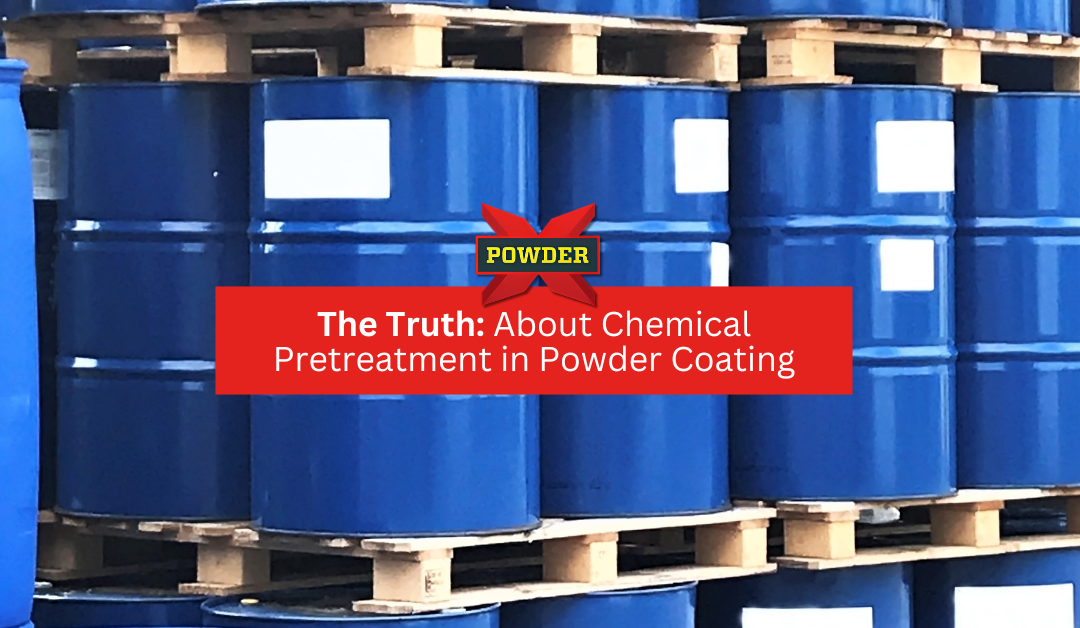Why Chemical Pretreatment is a Must-Have for Powder Coating Success
Not long ago, gathering information on powder coating was an uphill battle. Industry professionals relied on trade magazines, technical manuals, and word-of-mouth to learn best practices. Today, a simple Google search brings up thousands of pages of information—but not all of it is accurate. Misinformation is rampant, especially when it comes to the role of pretreatment in powder coating.
So let’s set the record straight: Mechanical blasting alone is not enough for a durable, long-lasting powder-coated finish. Chemical pretreatment is an essential step for ensuring superior adhesion, corrosion resistance, and overall coating performance.
Why Pretreatment Matters: The Three Pillars of a Lasting Coating
When preparing a part for powder coating, we aren’t just cleaning it to make it look good—we’re doing it for three critical reasons:
-
Appearance – A properly cleaned and pretreated part ensures an even, smooth, and professional powder-coated finish.
-
Adhesion – Effective pretreatment enhances powder adhesion, preventing premature chipping or peeling.
-
Corrosion Protection – This is where chemical pretreatment outshines mechanical blasting alone.
Many DIY powder coaters and hobbyist forums claim that blasting is all you need for surface prep. That’s simply not true. While blasting can create a surface profile suitable for adhesion, it lacks the necessary corrosion protection—an essential factor for long-term durability and performance.
The Problem with Blasting Alone
Blasting removes rust, scale, and contaminants, but it does nothing to prevent corrosion from forming beneath the powder coating. This is where chemical pretreatment plays a crucial role.
Think of It This Way:
All metal is porous. If you blast a part that contains oil, grease, or contaminants, where does that residue go? Into the metal. Once the powder coating is applied and the part is cured, those trapped contaminants expand under heat, causing bubbling, poor adhesion, and premature coating failure.
Skipping chemical washing before powder coating is like painting over a dirty wall—it might look fine at first, but it won’t last.
Why Chemical Pretreatment is Essential for Powder Coating
Chemical pretreatment provides three major advantages:
-
Superior Adhesion – Ensures the powder sticks firmly and evenly to the substrate.
-
Corrosion Resistance – Forms a protective layer that prevents rust from creeping under the coating.
-
Long-Lasting Durability – Parts pretreated with chemicals last significantly longer in harsh environments and salt spray tests.
In a salt spray test, parts that undergo mechanical prep alone fail in a fraction of the time compared to those with proper chemical pretreatment. If durability, longevity, and premium powder coating results matter to you, then skipping chemical pretreatment isn’t an option.
Best Practices for Powder Coating Pretreatment
For the best powder coating performance, follow these pretreatment steps:
1️⃣ Degreasing & Cleaning – Remove oils, grease, and dirt from the surface.
2️⃣ Chemical Etching or Phosphating – Apply a conversion coating to enhance adhesion and corrosion protection.
3️⃣ Rinsing & Drying – Ensure the part is completely clean and dry before applying powder.
Using high-quality pretreatment chemicals and industrial-grade powder coating equipment ensures a flawless, long-lasting finish.
Bottom Line: Do It Right the First Time
If you’re serious about professional-grade powder coating, you must incorporate chemical pretreatment into your powder coating process. Whether you’re coating for automotive, industrial, or commercial applications, getting it right the first time saves time, money, and customer headaches.
💡 Remember: It’s okay to work for yourself, but why work by yourself? That’s what we’re here for. If you have questions or need expert powder coating advice, reach out—we’re happy to help.
🚀 Get the best powder coating results—use the right pretreatment!
Ready to Step Up Your Pretreatment Process?
Explore our Powder Market for all your pretreatment materials!

